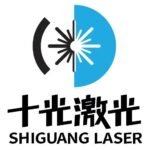If you’ve been considering a handheld laser welding machine to tackle aluminum alloy repairs—or just curious about the latest welding innovations—this long-form guide breaks down everything you need to know. From Reddit user insights to material advice, workflow tips, and equipment features, we cover it all in detail.
1. Introduction: Why Handheld Laser Welding Is Gaining Traction
Traditional welding methods like MIG and TIG often struggle with aluminum’s high reflectivity and thermal conductivity. Enter the handheld laser welder—a portable device that focuses high-density laser energy for precise, clean welds. Reddit users have described it as a game-changer when working on aluminum sheets under roughly 4 mm thickness. For example:
“It’s actually surprisingly deep. It’s really the next step for aluminium/stainless as long as the thickness under 4 mm.”
That kind of end-user feedback gives credence to the growing interest in handheld laser welding machines.
2. How Handheld Laser Welding Machines Operate
Unlike arc welding tools, these devices direct a focused laser beam—often fiber or solid-state—through a handheld gun. The beam melts the metal precisely, minimizing heat input to surrounding areas. According to welding experts and industrial sources, this results in very narrow heat-affected zones (HAZ), deep penetration when needed, and faster solidification.
Key Components:
- Laser source (fiber / solid-state)
- Handheld welding gun with focusing lens and nozzle
- Cooling system (water-cooled or air-cooled)
- Control panel or touchscreen for power, pulse, mode
- Auxiliary gas for shielding (argon/aluminum-compatible setups)
3. Welding Aluminum Alloy: Reddit User Experiences
Real-world experience is always a valuable reference. Reddit posts highlight both promise and caveats:
- Users confirm successful full penetration welds through aluminum ≤4 mm using handheld units.
- Some users say it’s “magic” when everything is dialed in—despite little formal welding experience. For instance, one user with only high school metal shop experience was able to weld 4 mm aluminum in minutes, bypassing TIG complexities entirely.
- Many mention that technique and setup precision are non-negotiable. Welds need perfect fit-up and cleanliness to avoid defects.
- Caveat on low-quality or cheapest handheld units from some Chinese suppliers—they may present serious risks to operators without compliance or safety features.
4. Advantages and Limitations of Handheld Laser Welding Machines
According to industrial analyses and laser suppliers:
- Minimal Heat‑Affected Zone: Laser welding produces a narrow HAZ, reducing distortion and cracking risk.
- Greater Precision and Cleanliness: Welds are smoother with less spatter or grinding. Ideal for aesthetic or tight‑tolerance jobs.
- Speed and Efficiency: Laser welders operate significantly faster than TIG/MIG—especially on thin aluminum.
- Portability: Handheld guns paired with compact power source make field repair tasks easier.
- Can weld dissimilar materials: Certain setups allow joining aluminum to copper, steel, or stainless steel.
Limitations to consider:
- Not effective for thick metals—most handheld models penetrate up to ~4 mm reliably.
- High upfront cost and maintenance complexity.
- Operation requires strict positioning and perfectly clean surfaces. Any gap or contamination can compromise weld quality.
- Safety is non-negotiable—improper shielding or reflections can cause severe injury. Units from unknown suppliers may lack compliance.
5. Welding Procedure & Safety Protocols
Before operating a handheld laser welder, follow these steps:
Pre‑flight checklist:
- Surface cleaning: remove oxides, grease; especially critical for aluminum.
- Fixture alignment: weld seam fit-up must be tight and consistent.
- Cooling and gas flow: verify coolant and shielding gas lines are functional.
Operation sequence:
Power on system → start cooling → test laser triggering on blank piece → adjust laser parameters (power, pulse, speed) → begin weld pass.
Work at consistent travel rate; pause at joints. Monitor molten pool; adjust focus if penetration seems shallow.
Safety guidelines:
- Wear Class 4-rated laser goggles and laser safety jacket/gloves.
- Enclose welding area or build a shielded bay that disables laser when opened. Avoid reflective surfaces nearby.
- Ensure proper grounding and ventilation to manage fumes.
6. Material Compatibility and Use Cases
Handheld laser welders are best suited for: stainless steel, aluminum (especially 5086 alloy), titanium, copper alloys, carbon steel.
Beispiele:
- Automotive repair: spot fixes on aluminum body panels or battery trays
- Marine fittings: welding of aluminum structures with minimal distortion
- Electronics chassis / food-safe enclosures requiring high weld finish with minimal cleanup
Cross-material welds—e.g. aluminum to copper—are possible but require specialized setups like laser wire feed or wobble head.
7. Equipment Selection & Product Considerations
When evaluating a handheld laser welding machine, weigh factors such as:
- Power level: 500 W–2000 W for aluminum up to ~4 mm; deeper penetration needs 2000 W+.
- Beam mode: continuous vs pulsed; pulsed can reduce porosity on thin materials
- Cooling system: compact water-cooled systems support continuous duty better.
- Controls: presets for aluminum alloy recommended—reduces adjustment mistakes
- Brand reputation & compliance: prioritise brands meeting Class 4 laser safety standards. Cheap imports may lack licensing.
Popular models include IPG LightWeld series, OPMT G5-2000WCUS/G5-3000WCUS with wobble tech.
8. Summary & Next Steps
To sum up, a modern handheld laser welding machine offers compelling advantages when working on aluminum alloys—especially in terms of weld quality, speed, and portability. But achieving consistent results requires careful setup, clean materials, and strict safety protocols.
As Reddit users have found, when everything is aligned—setup, parameters, cleanliness—you can reliably weld aluminum ≤4 mm with minimal distortion and exceptional finish.
✅ If you’re evaluating options: start with sample weld tests, validate weld strength, check for compliance with laser safety standards, and consider operator training if needed.
🎯 For professional support, custom weld sampling, or demo setups, feel free to contact Shiguang Laser.



